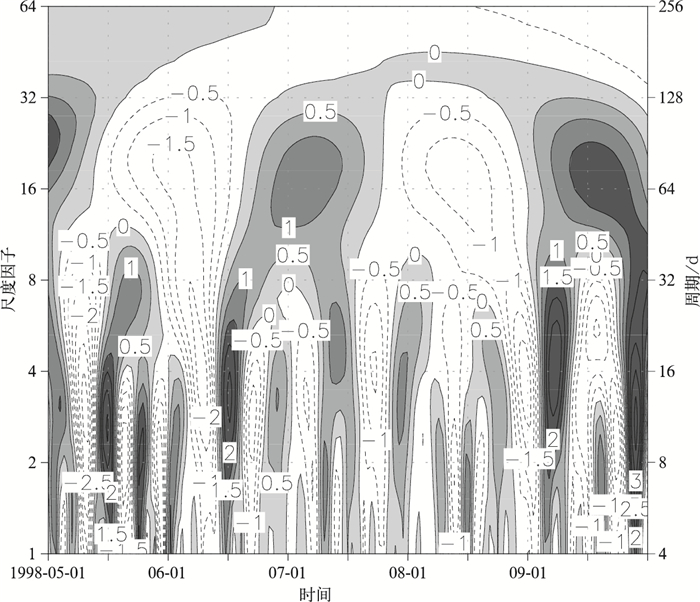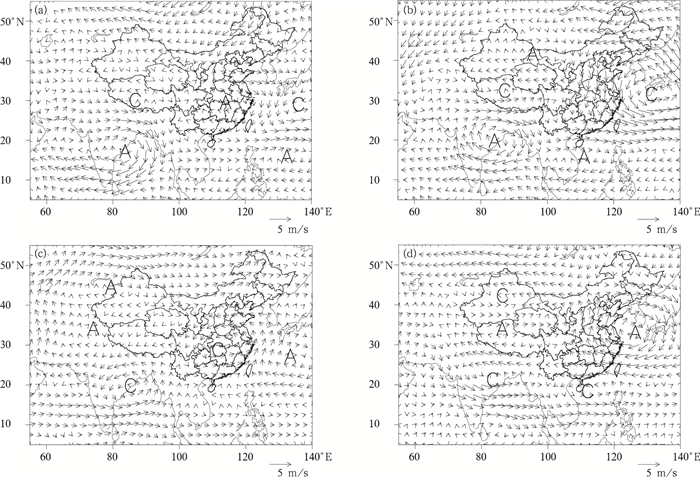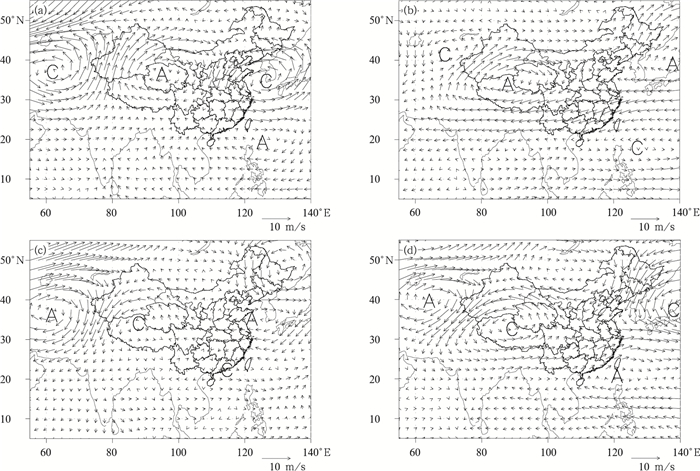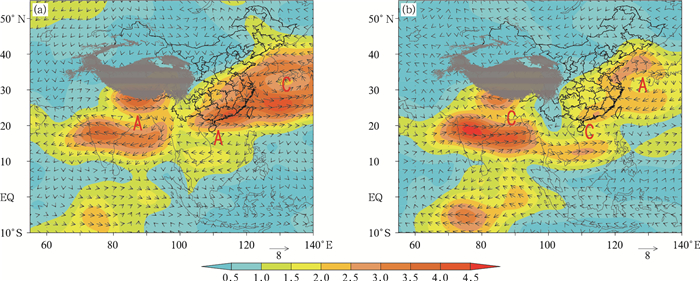Atmospheric Low-frequency Oscillation over the Tibetan Plateau During 1997-1998 and Its Effects on Precipitation
-
摘要: 利用1979—1998年NCEP/DOE逐日再分析资料和国家气象信息中心的常规观测站资料,研究了1997/1998年冬季、1998年夏季青藏高原 (简称高原) 季风的低频振荡特征,研究夏季高原和周边区域高低层大气低频环流系统的配置及其与我国降水的联系。结果表明:1997/1998年冬季和1998年夏季,高原季风不仅表现出很强的30~60 d的周期振荡特征,还伴随有较强的准双周低频振荡;相应区域对流层上层200 hPa上的环流系统则是30~60 d为主的周期变化。1998年夏季,高原地面气压也存在两个频带的低频振荡变化,且其强度存在明显的经向变化,即自南向北30~60 d低频振荡信号有逐渐减弱趋势,准双周信号则呈增强趋势。对30~60 d的低频信号而言,高原夏季风低频信号较强 (弱) 时,高原地面表现为低频低 (高) 压环流系统,在同纬度带的我国东部地区和西太平洋沿岸,是较强的低频北 (南) 风和低 (高) 压环流系统;相应地,在80°~90°E之间,自孟加拉湾到我国西北中部地区,是低频反气旋-气旋-反气旋的经向低频波列;受低频环流系统影响,高原东部、长江中下游地区降水偏多 (少)、川西高原、云南西南部降水偏少 (多)。Abstract: Based on NCEP/DOE daily reanalysis data and conventional observations of National Meteorological Information Center, characteristics of the atmospheric low-frequency oscillation of the Tibetan Plateau monsoon in the winter of 1997-1998 and in the summer of 1998 are studied. Furthermore, the configuration of the upper and lower atmospheric low-frequency circulation system on and around the Plateau and its connection to the precipitation of China are also studied. Results mainly show that the Plateau monsoon exhibits not only a strong periodic oscillation of 30-60 days, but also a quasi-biweekly low-frequency oscillation feature, and the relevant upper troposphere circulation system in the same areas at 200 hPa mainly shows a periodic variation of 30-60 days. In the summer of 1998, there are two low-frequency oscillations of surface pressure on the Plateau and its strength has significant longitudinal change, which means that the periodic oscillation of 30-60 days gradually reduces from south to north, while the signal of quasi-biweekly oscillation becomes stronger.As for low-frequency signal of 30-60 days, when the Plateau summer monsoon is stronger (weaker), there is an obvious low-frequency cyclonic convergence (anti-cyclonic divergence) circulation system from the Plateau to the western Pacific between 25°N and 35°N, but the low-frequency anti-cyclonic (cyclonic) circulation system exists in the region south to the Plateau, from the northern Indian subcontinent and the Bay of Bengal to the northern part of South China Sea. Within the longitude scope of the Plateau (between 80°E and 90°E), there is a low-frequency wave chain from the Bay of Bengal to the eastern region of Xinjiang, which ranks as low-frequency anticyclone (cyclone)-low-frequency cyclone (anticyclone)-low-frequency anticyclone (cyclone). Within the latitude scope of the Plateau, there is low-frequency anti-cyclonic (cyclonic) circulation system at 200 hPa from the western part of the Plateau to the Sea of Japan.Influenced by low-frequency circulation system, when Plateau summer monsoon is strong, the low-frequency circulation system configuration within the latitude scope of the plateau converge on the low-level and diverge on the high-level of 200 hPa, which cause more precipitation over the eastern part of the Plateau and the middle and lower reaches of the Yangtze, while cause less precipitation over the western Sichuan Plateau and southwestern Yunnan. When the Plateau summer monsoon is weak, the low-frequency circulation system configuration diverges on the low-level and converge on the high-level, which leads to less rainfall in many parts of the contral-eastern part of the Plateau and the eastern part of China. At this time, the easterly flux from the South China Sea, southwesterly flux from the Bay of Bengal and northerly flux from the Plateau converge in the southwest of Yunnan and corresponding low-frequency circulation system of water vapor transportation also provide moisture conditions in this region, as a result, the precipitation in the southwest of Yunnan becomes more.
-
图 1 1997/1998年冬季 (a) 和1998年夏季 (b) 高原季风指数与其季节变化趋势间偏差的小波变换以及冬季 (c) 和夏季 (d) 小波方差
Fig. 1 The wavelet transform of the difference between the Plateau monsoon index and its seasonal change tendency in the winter of 1997-1998 (a) and in the summer of 1998 (b) with wavelet variances during the winter of 1997-1998 (c) and the summer of 1998 (d)
图 2 1997/1998年冬季 (a) 和1998年夏季 (b) 200 hPa区域平均位势高度场与其季节变化趋势偏差的小波变换以及冬季 (c) 和夏季 (d) 的小波方差
Fig. 2 The wavelet transform of the difference between 200 hPa regional average geopotential height field and its seasonal change tendency in the winter of 1997-1998 (a) and in the summer of 1998 (b) with the wavelet variances during the winter of 1997-1998 (c) and the summer of 1998 (d)
图 5 1998年5—9月600 hPa高原季风指数30~60 d低频振荡的4个不同位相合成的600 hPa低频风场 (A代表低频反气旋,C代表低频气旋) (a) 第1位相,(b) 第2位相,(c) 第3位相,(d) 第4位相
Fig. 5 600 hPa low-frequency wind field of four phases based on 30-60 d filtered 600 hPa Plateau monsoon index from May to Sep in 1998 (A denotes low-frequency anticyclone, C denotes low-frequency cyclone) (a) phase 1, (b) phase 2, (c) phase 3, (d) phase 4
图 6 1998年5—9月200 hPa区域平均位势高度场30~60 d低频振荡的4个不同位相合成的200 hPa低频风场
(A代表低频反气旋,C代表低频气旋) (a) 第1位相,(b) 第2位相,(c) 第3位相,(d) 第4位相
Fig. 6 200 hPa low-frequency wind field of four phases based on 30-60 d filtered 200 hPa regional average geopotential height field from May to Sep in 1998
(A denotes low-frequencg anticyclone, C denotes low-frequency cyclone) (a) phase 1, (b) phase 2, (c) phase 3, (d) phase 4
-
[1] Madden R D, Julian P.Detection of a 40-50 day oscillation inthe zonal wind in the tropical Pacific.J Atmos Sci, 1971, 28(5):702-708. doi: 10.1175/1520-0469(1971)028<0702:DOADOI>2.0.CO;2 [2] Madden R D, Julian P.Description of global-scale circulation cells in the tropics with a 40-50 day period.J Atmos Sci, 1972, 29(6):1109-1123. doi: 10.1175/1520-0469(1972)029<1109:DOGSCC>2.0.CO;2 [3] 李崇银.大气低频振荡.北京:气象出版社, 1993:4-12. [4] Krishnamurti T N, Gadgil S.On the structure of the 30 to 50 day mode over the globe during FGGE.Tellus, 1985, 37(4):336-360. doi: 10.3402/tellusa.v37i4.11677 [5] 李崇银.30—60天大气振荡的全球特征.大气科学, 1991, 15(3):66-67. http://www.cnki.com.cn/Article/CJFDTOTAL-DQXK199103008.htm [6] 章基嘉, 孙国武, 陈葆德.青藏高原大气低频变化的研究.北京:气象出版社, 1991:25-48. [7] 孙国武, 陈葆德.青藏高原上空大气低频波的振荡及其经向传播.大气科学, 1988, 12(3):250-257. http://www.cnki.com.cn/Article/CJFDTOTAL-DQXK198803003.htm [8] 谢安, 叶谦, 陈隆勋.青藏高原及其附近地区大气周期振荡在OLR资料上的反映.气象学报, 1989, 47(3):272-278. doi: 10.11676/qxxb1989.036 [9] 王跃男, 陈隆勋, 何金海, 等.夏季青藏高原热源低频振荡对我国东部降水的影响.应用气象学报, 2009, 20(4):419-427. doi: 10.11898/1001-7313.20090405 [10] 刘式适, 柏晶瑜, 徐祥德, 等.青藏高原大地形的动力、热力作用与低频振荡.应用气象学报, 2000, 11(3):312-321. http://qikan.camscma.cn/jams/ch/reader/view_abstract.aspx?file_no=20000347&flag=1 [11] 彭茹, 武炳义.1982/1983年季风准双周振荡的位相传播及地理特征.应用气象学报, 1995, 6(2):206-212. http://qikan.camscma.cn/jams/ch/reader/view_abstract.aspx?file_no=19950233&flag=1 [12] 孙照渤, 李云康.冬半年青藏高原及其附近地区15—25天振荡的传播特征.应用气象学报, 1993, 4(增刊Ⅰ):24-30. http://kns.cnki.net/KCMS/detail/detail.aspx?dbcode=CJFQ&dbname=CJFD9093&filename=YYQX1993S1003&v=MTc3MzRxVHJXTTFGckNVUkwyZlkrUm9GaURuVXI3TVBEVGFkckt4RjlLdnJvOUZaNFI4ZVgxTHV4WVM3RGgxVDM= [13] 徐国强, 朱乾根.1998年青藏高原大气低频振荡的结构特征分析.南京气象学院学报, 2000, 23(4):505-513. http://www.cnki.com.cn/Article/CJFDTOTAL-NJQX200004006.htm [14] 华维, 范广洲, 王炳赟.近几十年青藏高原夏季风变化趋势及其对中国东部降水的影响.大气科学, 2012, 36(4):784-794. doi: 10.3878/j.issn.1006-9895.2012.11173 [15] 汤懋苍, 梁娟, 邵明镜, 等.高原季风年际变化的初步分析.高原气象, 1984, 3(3):76-82. http://www.cnki.com.cn/Article/CJFDTOTAL-GYQX198403008.htm [16] 汤懋苍.高原季风的年际振荡及其原因探讨.气象科学, 1995, 15(4):64-68. http://www.cnki.com.cn/Article/CJFDTOTAL-QXKX199504006.htm [17] 李国平.青藏高原动力气象学.北京:气象出版社, 2007:2-3. [18] 白虎志, 马振锋, 董文杰.青藏高原地区季风特征及与我国气候异常的联系.应用气象学报, 2005, 16(4):484-491. doi: 10.11898/1001-7313.20050409 [19] 刘晓东.青藏高原隆升对亚洲季风形成和全球气候与环境变化的影响.高原气象, 1999, 18(3):321-332. http://www.cnki.com.cn/Article/CJFDTOTAL-GYQX199903006.htm [20] 朱乾根, 林锦瑞, 寿邵文, 等.天气学原理和方法.北京:气象出版社, 2000:555-556. [21] 陈丽臻, 张先恭, 陈隆勋.长江流域两个典型旱、涝年大气30—60天低频波差异的初步分析.应用气象学报, 1994, 5(4):483-488. http://qikan.camscma.cn/jams/ch/reader/view_abstract.aspx?file_no=19940482&flag=1 [22] 李菲, 段安民.青藏高原夏季风强弱变化及其对亚洲地区降水和环流的影响——2008年个例分析.大气科学, 2011, 35(4):694-706. http://cdmd.cnki.com.cn/Article/CDMD-10300-1011155605.htm -


 设为首页
设为首页 加入收藏
加入收藏


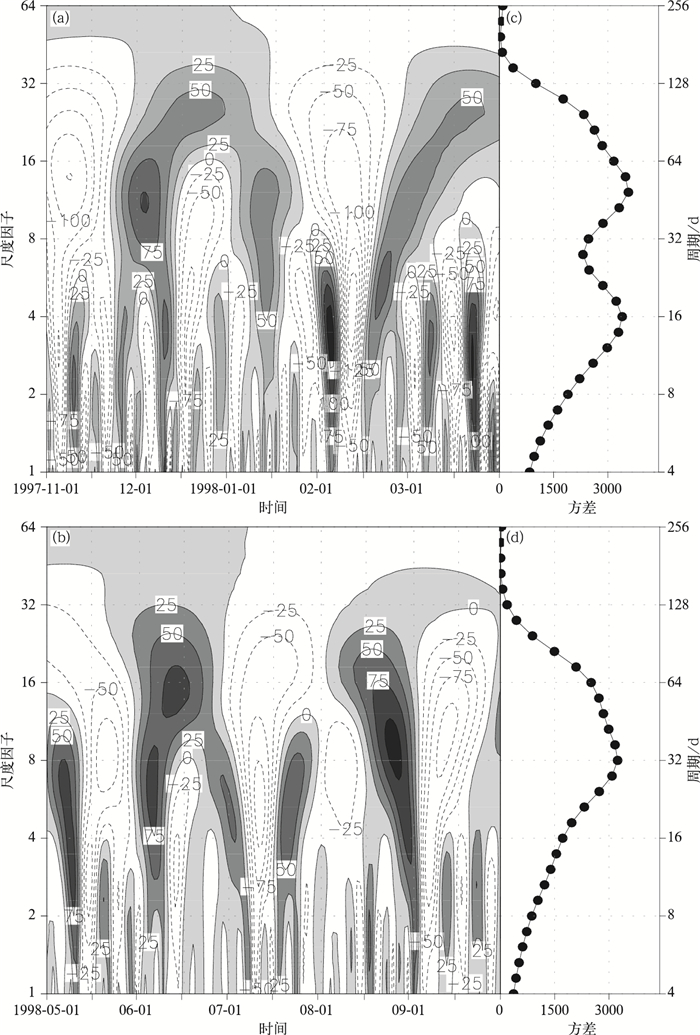
 下载:
下载:

